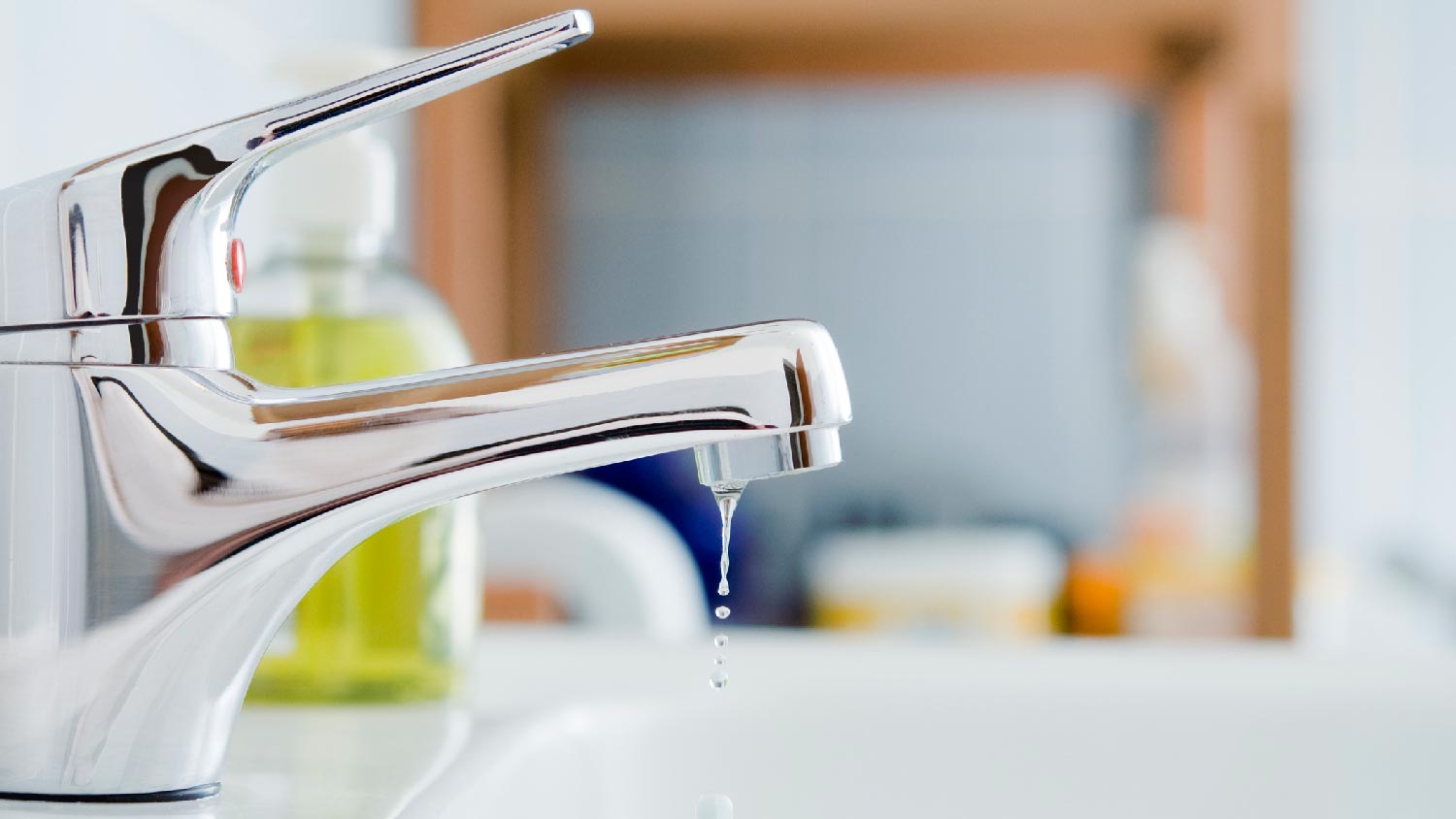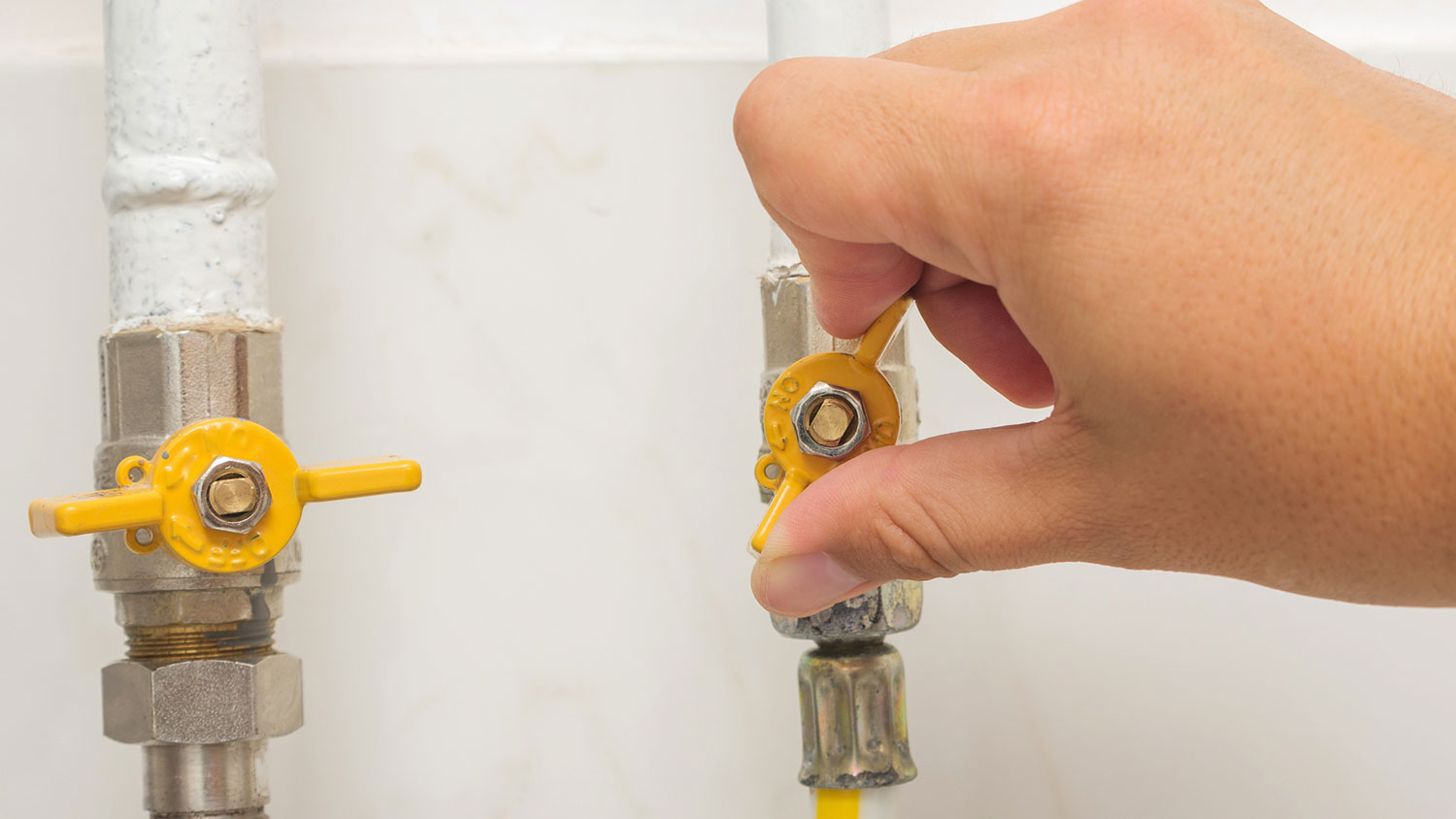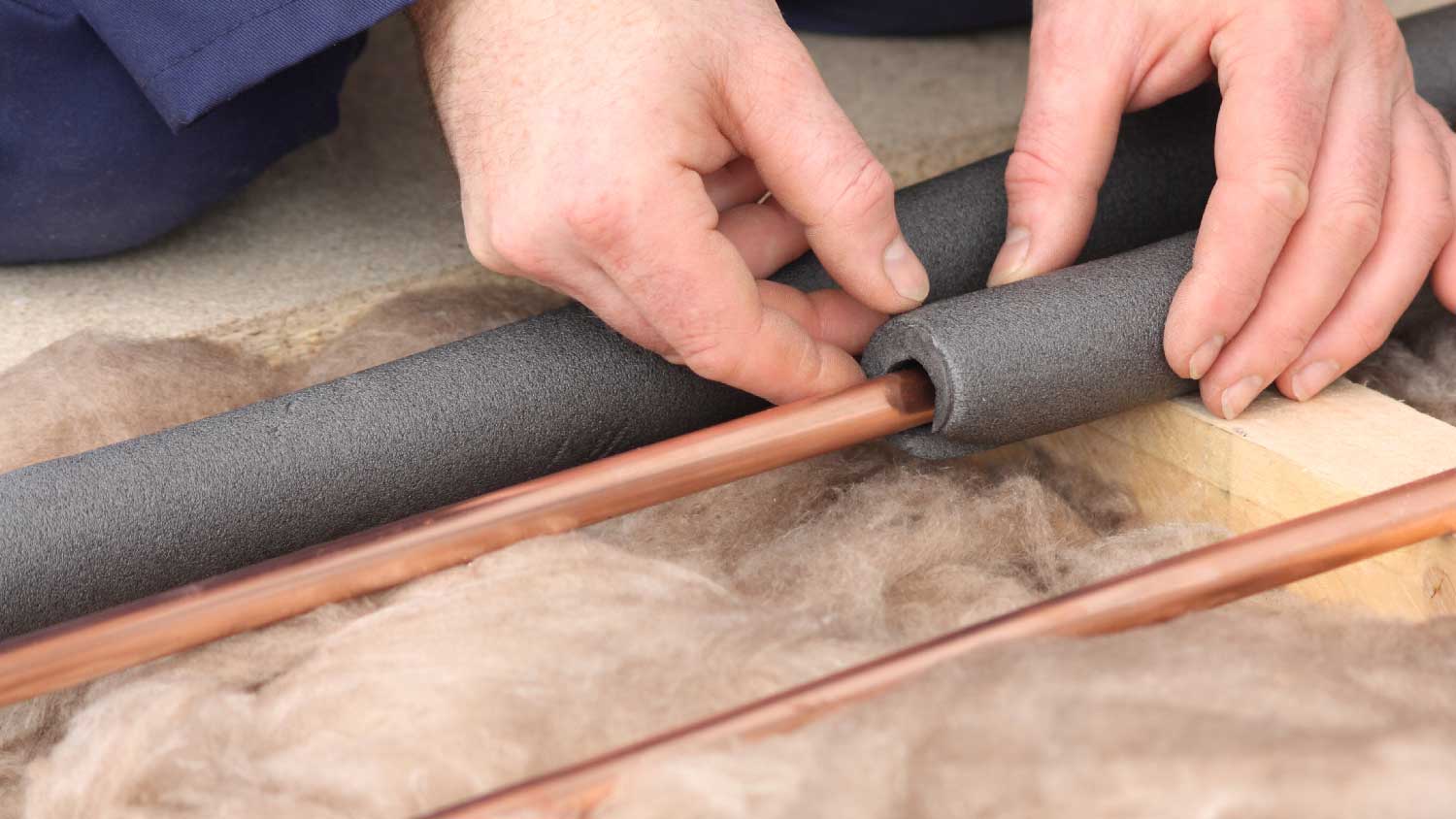Frozen Pipes Burst? Here’s What To Do and Who To Call
Frozen pipes require fast action—especially when they burst


When pipes freeze, the water inside turns to ice and expands, which could lead to burst pipes.
Signs of frozen pipes include a lack of water from faucets or actual frost on the outside of the pipes.
Contaminated water, noises behind the wall, fluctuating water pressure, and signs of water damage are all indicators of a frozen pipe burst.
Turn off the water immediately, clean up what you can, and call in an emergency plumber and water restoration service.
Insulating your pipes, turning up the heat, and letting your faucets drip can prevent future frozen pipe bursts.
When temps plummet in the winter, our homes face multiple threats, from overworked furnaces trying to keep up to frozen water heaters to ice dams on the roof. Another major threat is frozen pipes. When your pipes freeze over, the water inside them turns to ice and expands—and that pressure can cause the pipes to burst. Even small holes in your plumbing can lead to massive water damage and mold growth in a short period of time.
Below, we’ll walk you through how to detect if your frozen pipes burst, what to do immediately, which professionals to call, and how to prevent frozen pipes in the future.
Signs a Frozen Pipe Burst

If a frozen pipe has burst somewhere in your home, it’s crucial to act fast—but that requires that you’ve noticed a pipe has burst in the first place. When temps plummet, monitor your pipes closely, especially if your home has a history of frozen pipes.
Here are some signs to watch for that might indicate a pipe has frozen—or worse, that frozen pipe has already burst:
1. No Water From Faucets
Try running your water from various faucets, including sinks, showers, and even refrigerator dispensers. Flush all the toilets in your home as well. If water won’t come out of a tap or a toilet tank won’t refill, you might have frozen pipes.
2. Frost on Pipes
Look at the pipes under your sink, in the basement, and anywhere you can easily inspect them. If frost has formed on the exterior of your pipes, they’re frozen—and liable to burst, if they haven’t already.
3. Noises Behind the Walls
If a frozen pipe burst and has since thawed, you might hear strange noises behind the walls when you run the water, since some water is leaking from a hole somewhere in the piping.
4. Contaminated Water
Similarly, if you notice dirty or foul-smelling water after a low-temperature period, it’s possible your pipes froze, burst, and are now letting in contaminants such as dirt.
5. Pooling Water
Check under the sink, around your shower and toilet, at the base of your washing machine, and even by your hose spigot. Is there any water pooling? That could be a sign of a burst pipe.
6. Fluctuating Water Pressure
Fluctuating water pressure could be the result of many plumbing problems, but a frozen pipe that burst is one possible culprit.
7. Water Meter Movement
If you suspect a pipe has burst, go check your water meter while all the fixtures in your home are off. If the meter indicates movement, you’ve got a pipe leak somewhere in your home that is likely the result of a frozen pipe bursting.
8. Utility Bill Increases
Similarly, if you notice your water bill has increased without any changes to your family’s routine, it’s possible you have a burst pipe that has been leaking for some time.
9. Mold, Mildew, or Water Stains
Mold and mildew can appear in just a day or two after a leak. Watch your walls and ceilings for strange water stains or signs of mold or mildew. These could all indicate a frozen pipe burst the last time it got really cold.
What To Do If a Frozen Pipe Burst

Ideally, you will notice right away if a frozen pipe has burst so you can take immediate action and avoid large amounts of water damage. In reality, you might not notice a frozen pipe burst right away, meaning you could have more cleanup to do. Regardless, here are the steps to take the moment you realize a frozen pipe burst:
1. Shut Off the Water
First and foremost, shut off the main water supply to your home to prevent any further damage. As long as the water stays on, it can keep leaking into your home.
2. Clean Up What You Can
Ultimately, you’ll need professional help to clean up major water damage, but you should take care of what you can immediately. Soak up water with towels, and use fans to dry out the area. It’s likely too cold to open windows for airflow, but you can run a dehumidifier if you have one.
3. Call in the Pros
Repairing the pipes, fixing drywall and flooring, remediating mold, and completely drying your home out—you’ll likely need to do some (or even all) of these after a frozen pipe burst. It’s best to leave these kinds of things, particularly plumbing repair and water damage restoration, to the pros.
Get them in as soon as possible. Emergency plumbers cost up to 3 times as much as a plumber during regular hours, but immediate resolution is important, especially if you suspect multiple pipes have frozen or burst.
Who To Call If a Frozen Pipe Burst
First and foremost, you need to hire a trusted plumbing repair company near you to fix any pipes that have burst. A thorough plumber will be able to look for signs that additional pipes have burst that you might not have even noticed yet.
In addition, you may need to call in a local water damage restoration company to help with cleanup. On average, the cost to repair water damage runs from $1,350 to $6,225. Additional contractors you might need include floor repair pros, drywall specialists, and mold remediation experts.
Photograph and document everything, as you may also need to call your homeowners' insurance agent to file a claim. Accidental water damage and related plumbing issues are typically covered by a thorough homeowners insurance policy.
How To Prevent Frozen Pipes From Bursting

Acting fast after a frozen pipe has burst is important, but it’s just as crucial to take measures to prevent frozen pipes in the first place. Here’s what you can do:
Crank the Heat
Sure, turning the heat up significantly during cold-weather events will result in an expensive gas or electric bill, but it will be nothing compared to the cost of pipe repair and the cost of water damage restoration if a pipe bursts.
Insulate Your Home
If you live in a cold climate, invest in good home insulation. Here are a few ways to better insulate your home ahead of the winter. You can also use caulk to seal cracks in your home’s exterior and gaps around windows and doors.
Insulate Your Pipes
You can also research how to insulate pipes as a weekend DIY project ahead of a winter storm. Just make sure you know the best pipe insulation materials to use for your home to make the pipe insulation worth the investment.
Keep Your Pipes Warm
While you can’t light a warm fire underneath your pipes, you can keep them warm by opening cabinet doors and keeping space heaters close to them, particularly if you have cold or drafty rooms in your home.
Let the Faucets Drip
Leave your pipes all on with a gentle drip to discourage freezing when temperatures are sub-zero. This can reduce pressure in your pipes, which causes frozen pipes to burst.
Learn how you can further protect your home during the cold season with these winter plumbing tips.





- Gas Plumbers
- Plumbing Repairs
- Sump Pump Installation
- Wood & Pellet Stove Repair
- Shower Repair
- Wood Stove Services
- Emergency Plumbers
- Fire Sprinkler Contractors
- Perc Test Companies
- Toilet Repair & Installation
- Boiler Repair
- Sewer Line Repair
- Faucet Repair
- Main Drain Camera Companies
- Foundation Drain Installation
- French Drains
- Bathtub Replacement
- Subcontractors
- Storm Drain Contractors
- Affordable Plumbing
- Plumbing & Heating Companies
- Bathroom Repair Services
- Sink Installation
- Commercial Plumber
- Barndominium Builders
- Water Line Repair
- Faucet Installation
- Water Line Installation
- Leak Detection









